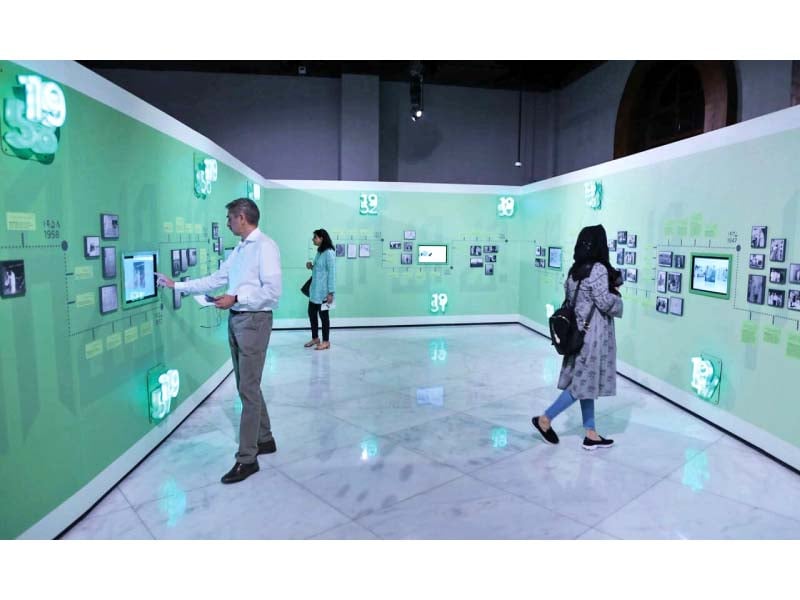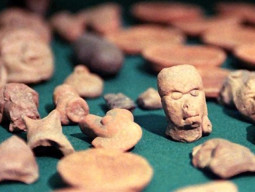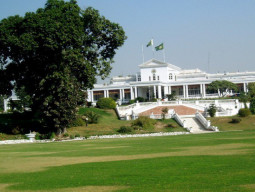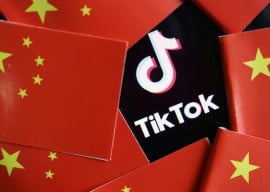
The newly-opened National History Museum, however, aims to revitalise this story using the latest audiovisual technologies and techniques. Located in Lahore’s Greater Iqbal Park – right where the Lahore Resolution was signed – the collaborative project of the Punjab government and the Citizens Archive of Pakistan (CAP) brings the Subcontinent’s Muslim struggle for freedom to life.
For many, history is a tedious subject. Some even find the word itself yawn-inducing. However, the designers and curators of NHM have tried increase the subject’s appeal by using audio, video and virtual reality aids to narrate the events that led to the creation of Pakistan in a fresh, innovative way. The designers have gone to great pains to make NHM displays accessible to everyone, whether they comprehend Urdu or English.
WWI soldier records still in mint condition in Lahore Museum
The museum has been divided in five sections, each showcasing a different aspect of the country’s history. Hall-1 contains exhibits chronicling the entry of the East India Company into the Subcontinent, a timeline of important Pakistan Movement events and audiovisual displays showcasing the historic Lahore Resolution, Gandhi-Jinnah talks, the 3rd June plan and the Indian Independence Act of 1947.

Hall-2, meanwhile, narrates the oral history of Pakistan using the voices of common citizens who witnessed the cruelties of migration. The hall also contains a video display covering the bloody riots of 1947.
Mock-up displays of the Wagah Railway Station and the refugee camps at the outset of independence are set up in Hall-3, along with displays chronicling the formation of the government and armed forces of Pakistan.
A booth with a special digital camera in this section allows visitors to take a black and white photograph with the Quaid-e-Azam or other independence leaders for Rs70 per print. The hall also contains a 3D-animation based virtual reality display that transports visitors back in time to witness the hardships Muslim migrants from India faced.
Hall-4 focuses on Pakistan’s popular culture, taking visitors on journey showcasing the country’s fledgling movie industry, the evolution of its music industry and traditional artifacts. Visitors can choose to listen to classic Pakistani songs or watch clips from popular Pakistani movies.
The history of sports in Pakistan is displayed in Hall-5 along with other displays showcasing young Pakistani historians’ work. The NHM also contains a Heroes Gallery which displays sketched portaits and busts of Pakistan’s national heroes.
Speaking to The Express Tribune, NHM Manager Awais Malik said thousands of historic documents and over 170 minutes of oral history has been digitised for the benefit of both casual visitors and researchers. “Our aim is to make the history interesting and accessible for everyone. It will help students and common citizens to learn about important eras of the history, besides making important archive documents accessible to researchers,” he said.
Centuries old historic books at Lahore Museum being converted into e-library
NHM Communications Officer Sharjeel Ahmad added that they are planning to make the museum more interactive and accessible by providing a web interface. “The mapping of the museum is currently underway. Once this is complete, we will begin work to make NHM displays available over the internet so people around the world can learn Pakistan’s history,” he said.
“This is very impressive,” said visitor Imran. “One can learn about significant events of Pakistan’s history first-hand.”
“I particularly enjoyed the letters Quaid-e-Azam and Mahatma Gandhi exchanged,” Imran added. “The fact that the Urdu translation of these letters is available at your fingertips makes it possible for everyone to learn our country’s history in the most authentic way.”
Published in The Express Tribune, March 23rd, 2019.






















1713973361-4/Destryed-Gaza-Historical-Sites-(1)1713973361-4-270x192.webp)








1713853507-0/MalalaHilary-(2)1713853507-0-270x192.webp)







COMMENTS
Comments are moderated and generally will be posted if they are on-topic and not abusive.
For more information, please see our Comments FAQ